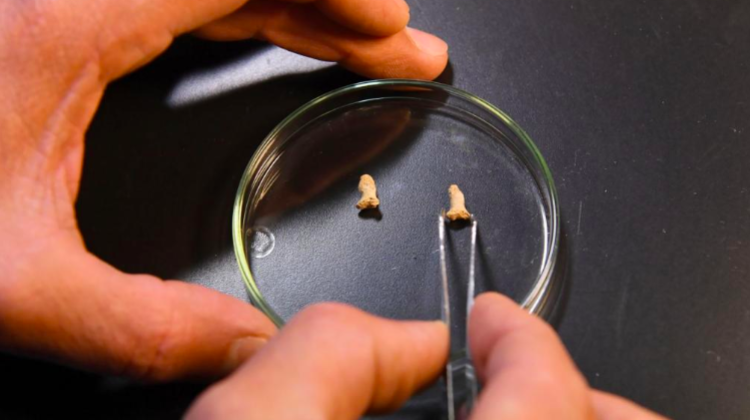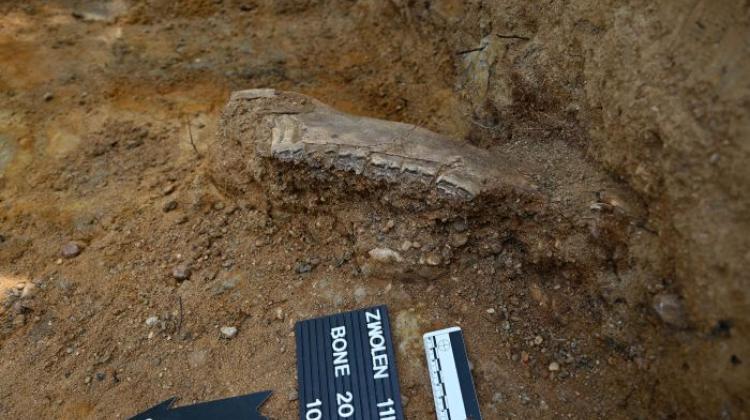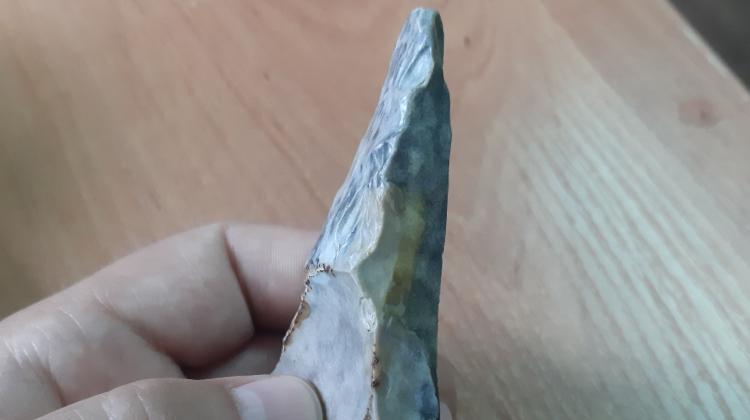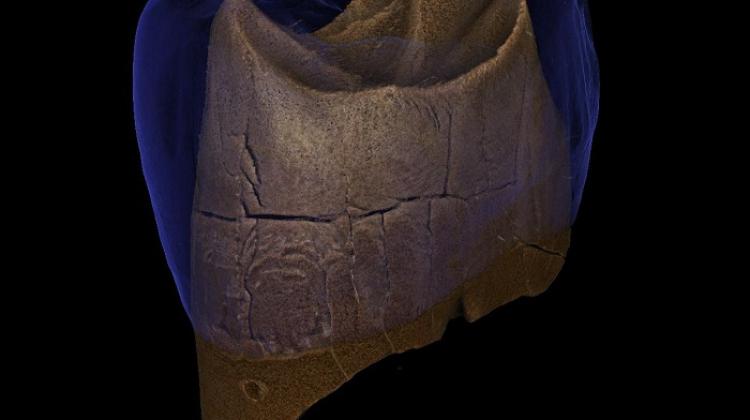Scientists discover the oldest human remains in Poland; they are over 100,000 years old
 Photo: PAP/Jacek Bednarczyk 02.10.2018
Photo: PAP/Jacek Bednarczyk 02.10.2018
The oldest human remains discovered in Poland are over 100,000 years old. They are hand bones of a Neanderthal child digested by a large bird. The remains were found in Cave Ciemna (Małopolska).
Until now, the oldest human remains from Poland, also of a Neanderthal, were the three molars from Cave Stajnia in the Kraków-Częstochowa Upland. Their age was estimated at approx. 52-42 thousand years.
"The bones our team discovered in Cave Ciemna are the oldest human remains from the area of today`s Poland, they are about 115,000 years old" - says Prof. Paweł Valde-Nowak from the Institute of Archeology of the Jagiellonian University in Kraków.
Excavations in Cave Ciemna are carried out as part of a National Science Centre grant, in cooperation with the Archaeological Museum in Kraków and the Institute of Systematics and Animal Evolution of the Polish Academy of Sciences. Information about the find will be published this year in the Journal of Paleolithic Archaeology.
Analysis shows that the bones are phalanges - digital bones of a Neanderthal child`s hand. This identification has been confirmed by two anthropologists, Dr. Anita Szczepanek from the Jagiellonian University in Kraków and Prof. Erik Trinkaus from Washington University in St. Louis.
Scientists noticed the characteristic, porous surface of the bones, dotted with dozens of holes, reminiscent of a strainer.
"Analyses show that this is the result of passing through the digestive system of a large bird. This is the first such known example from the Ice Age" - says Prof. Valde-Nowak. The scientist believes that the bird could attack and partially consume a young Neanderthal (probably around 5-7 years old). It could also feed on a deceased child. According to the researchers, neither option can be ruled out at this point.
The bones are no more than 1 cm long. They are very poorly preserved, so scientists will not be able to perform DNA analysis. "But we have no doubts that these are Neanderthal remains, because they come from a very deep layer of the cave, a few meters below the present surface. This layer also contains typical stone tools used by the Neanderthal" - adds Prof. Valde-Nowak. The scientist notes that this does not necessarily mean that the fingers ended up in the cave while the Neanderthals lived in it, because they could have used the cave seasonally.
The phalanges were discovered a few years ago (excavation research in Cave Ciemna has been going on for several decades). The remains were mixed up with animal bones. It was not until this year that researchers discovered that they were human bones during a detailed laboratory analysis.
"This is a unique discovery" - emphasises the scientist. - "Only single fragments of fossil bones belonging to relatives of modern man (Homo sapiens) have survived to our times in Poland". Professor Valde-Nowak also notes that in our country there are no remains of human species that precede the Neanderthal man, such as Homo erectus.
"We can count the Neanderthal remains found in Poland on the fingers of one hand!" - emphasizes Prof. Valde-Nowak. These are three teeth from Cave Stajnia, the two recently discovered fingers from Cave Ciemna and the tooth from the same period as the remains from Cave Stajnia, recently found tooth in Cave Ciemna - the archaeologist says.
Professor Valde-Nowak reminds that Neanderthals (Homo neanderthalensis) - very close relatives of modern man (Homo sapiens) - probably appeared in Poland, as in all of Europe, approx. 300,000 years ago. The oldest stone tools they used, discovered on the Vistula, are over 200,000 years old. So far, thousands of them have been discovered. These are mainly knives-scrapers, tools with a cutting and scraping function. They were discovered in southern Poland, because there were relatively good conditions for Neanderthal life in that area. The northern part of present Poland was covered by a continental glacier.
"There is still a discussion as to how long Neanderthals lived in Europe, including Poland. Unfortunately, we do not have strong arguments in this discussion, and we have no evidence that both species co-existed in Poland, which has been confirmed in Western Europe" - adds the archaeologist.
The Neanderthals on our continent mostly died out about 35,000 years ago. But in 2006, scientists published an article in "Nature", in which they argued that they were able to discover their 24 thousand years old remains - those were probably some of the last specimens of this species.
Scientists consider the Neanderthal a "brother", not an ancestor of contemporary man - it belonged to the extinct line of homo sapiens. For a long time, this species was presented in an unfavourable way - as being semi-animal and primitive. Research from recent years shows that this species of man had more in common with us than originally thought. Scientists are often unable to distinguish between the tools of modern men and those of Neanderthal men. Researchers also found that Neanderthals were the authors of some of the rock drawings known from European caves - namely those whose age is estimated at over 64,000 years. In turn, thanks to DNA research, it was possible to determine that homo sapiens was interbreeding with the Neanderthal.
PAP - Science in Poland, Szymon Zdziebłowski
szz/ zan/ kap/
tr. RL
Przed dodaniem komentarza prosimy o zapoznanie z Regulaminem forum serwisu Nauka w Polsce.


















